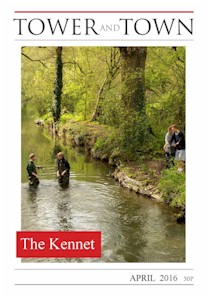

Tower and Town, April 2016 (view the full edition) (view the full edition)Frank Sawyer At MarlboroughFrank Sawyer remains one of the great figures in the world of fly fishing. He was born in 1906 at the Mill House in the village of Bulford on the banks of the River Avon, the river he is most closely associated with. He began his career in 1925 on the Avon at Lake, working for Lt-Col Bailley as assistant keeper to Fred Martin. He managed six miles of the river for Bailley's private fishing and leisure. Frank then became head keeper for the waters of the Officers' Fishing Association in 1928. In 1974 Sawyer became connected to Marlborough when he was asked to run the College's summer school fishing course. It was Sawyer who first suggested the construction of the two trout lakes that are here at the College, so that teaching fishing would be easier and more accessible. Sawyer's plan was to excavate the two lakes and then divert the River Kennet through them to fill them up. The water would then reconnect to the river, at the spot now known as 'Sawyer's Pool'. The idea was proposed in 1975 and work began in 1976. It was opposed vehemently by a biology teacher at the College who said it would destroy the natural habitats for the wildlife on the banks of the Kennet. Sawyer watched the construction of the lakes, first the larger and then the smaller of the lakes, in 1976. The pool on the river that bears his name has all the attributes of a perfect stretch of fishing. Sadly he passed away just after their completion. He was a heavy smoker which probably lead to his death in 1980. He has left the College and the fishing world a lasting legacy. He was awarded an MBE for his services to trout fishing and during his career his trout flies, such as Sawyer's Pheasant Tail Nymph (pictured) and his Killer Bug, gained legendary status among trout fishermen and are still used today. Ben Barnes |